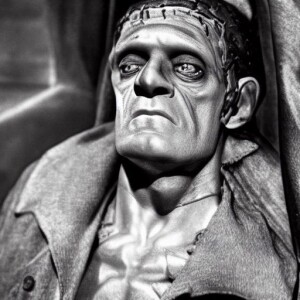Step into the eerie world of Mary Shelley’s masterpiece, “Frankenstein; or, The Modern Prometheus,” where a mysterious being known as Frankenstein’s monster takes center stage. This enigmatic creature, sometimes referred to simply as “the monster,” is the creation of Victor Frankenstein, a brilliant scientist and the story’s protagonist. Through a series of daring scientific experiments and the reanimation of lifeless flesh, Frankenstein breathes life into his extraordinary creation.
In Shelley’s captivating novel, the monster remains nameless, shrouded in a cloak of mystery. Yet, despite lacking a proper moniker, this remarkable being possesses an intellect and sensitivity that surprises all who encounter him. Initially, he embodies kindness and benevolence, yearning for acceptance and understanding. However, society’s cruel rejection and mistreatment based solely on his monstrous appearance transform him into a bitter and vengeful entity. The monster grapples with his own identity, desperately seeking companionship and compassion, only to be met with fear and hostility from the human world.
It is crucial to dispel the misconception that the monster himself is named Frankenstein. In truth, Frankenstein is the appellation reserved for his creator, the scientist who breathed life into him. Nonetheless, popular adaptations often portray the creature with green skin, a bolt-neck, a flat head, and a body sewn together, although Shelley’s original rendering leaves room for interpretation.
Frankenstein’s monster has transcended the pages of Shelley’s novel, etching itself into the annals of popular culture. This iconic figure symbolizes profound themes of isolation, the quest for identity, and the ramifications of scientific exploration. Countless films, books, and other media adaptations have brought this tragic and misunderstood character to life, capturing the hearts and imaginations of audiences worldwide.

